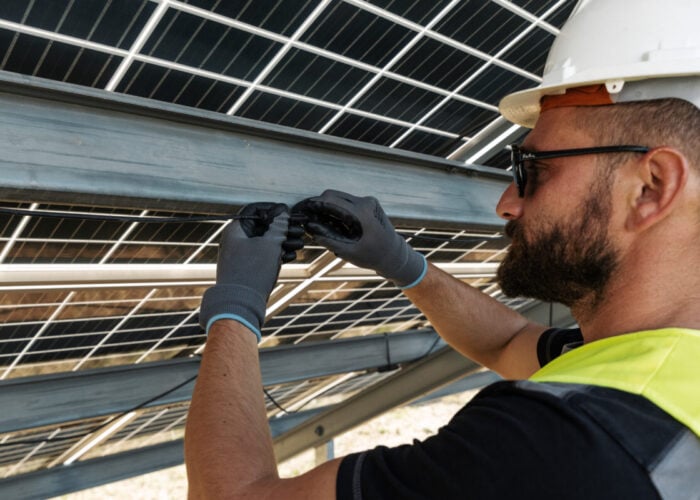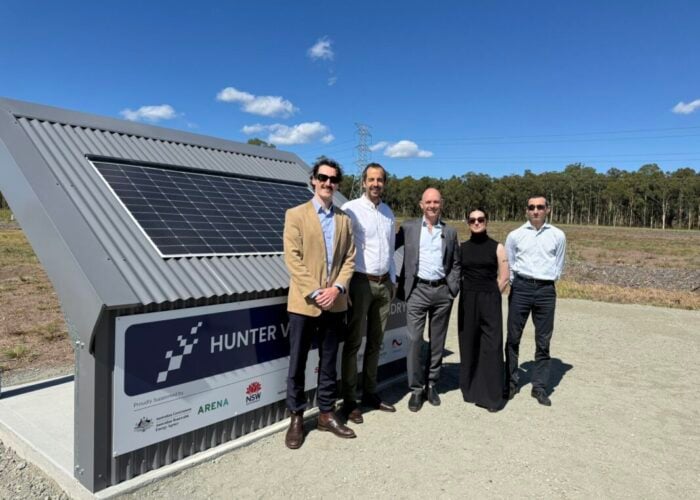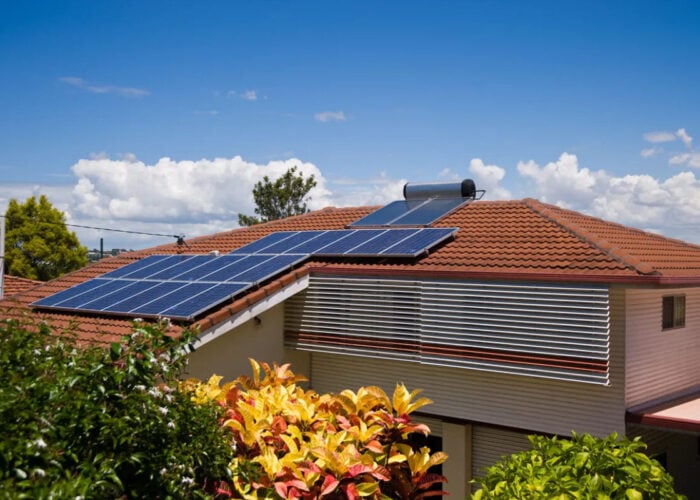
Scientists from the University of Sydney have created what they claim is the largest and most efficient triple-junction perovskite-perovskite-silicon tandem solar cell on record.
The researchers, led by professor Anita Ho-Baillee, said the milestone set a new global benchmark for this emerging photovoltaic technology and demonstrated the potential of multi-layered perovskite architectures to surpass the efficiency limitations of conventional single-junction solar cells.
Try Premium for just $1
- Full premium access for the first month at only $1
- Converts to an annual rate after 30 days unless cancelled
- Cancel anytime during the trial period
Premium Benefits
- Expert industry analysis and interviews
- Digital access to PV Tech Power journal
- Exclusive event discounts
Or get the full Premium subscription right away
Or continue reading this article for free
The team’s 16cm² triple-junction demonstration cell achieved an independently certified steady-state power conversion efficiency of 23.3%, representing the highest efficiency recorded for a device of this size, they said.
A smaller 1cm² cell achieved a record-breaking 27.06% power conversion efficiency, while also setting new standards for thermal stability.
The record-setting device employed a triple-junction perovskite-perovskite-silicon tandem configuration, featuring three stacked semiconductor layers with carefully tuned bandgaps. Each layer was optimised to absorb different portions of the solar spectrum, maximising energy harvesting across wavelengths that would otherwise be lost in single-junction cells.
The research also addressed long-standing concerns about perovskite stability, with the smaller cell passing a thermal cycling test, administered by the International Electrotechnical Commission (IEC), which exposes devices to 200 cycles of extreme temperature swings between -40 and 85 degrees Celsius. The cell retained 95% of its efficiency after more than 400 hours of continuous operation under light.
This durability improvement tackles one of the primary obstacles to the commercialisation of perovskite materials, which are prone to degradation under real-world operating conditions.
“We improved both the performance and the resilience of these solar cells,” Ho-Baillie said. “This not only demonstrates that large, stable perovskite devices are possible but also shows the enormous potential for further efficiency gains.”
The researchers replaced less stable methylammonium, commonly used in high-efficiency perovskite cells, with rubidium, resulting in a perovskite “lattice” that is less prone to defects and degradation. They also replaced the less stable lithium fluoride with piperazinium dichloride for a new surface treatment.
The researchers used gold at the nanoscale to connect the two perovskite junctions and maximise the flow of electric charge and light absorption by the solar cell.
“This is the largest triple-junction perovskite device yet demonstrated, and it has been rigorously tested and certified by independent laboratories,” Ho-Baillie said. “That gives us further confidence that the technology can be scaled for practical use.”
This achievement comes as the global solar industry intensifies efforts to commercialise perovskite photovoltaics. Companies such as Oxford PV have already demonstrated 29% efficiency with commercial-ready tandem modules in field tests, while others are undertaking intensive field testing to prove the bankability case of perovskite-based technologies.
Last week, Qcells’ chief technology officer Danielle Merfeld predicted that perovskite technologies could dominate the solar business within the next ten years.
Professor Ho-Baillie emphasised the rapid progress of perovskite technology. “It is an exciting time for solar research,” she said. “Perovskites are already showing us that we can push efficiencies beyond the limits of silicon alone.”
Ho-Baillie also highlighted the pace of perovskite development compared to established silicon technology. “It took people 40 years to double the efficiency of silicon,” professor Ho-Baillie explained. “Perovskite caught up with silicon in just ten years.”
The results have been published in the journal Nature Nanotechnology.






